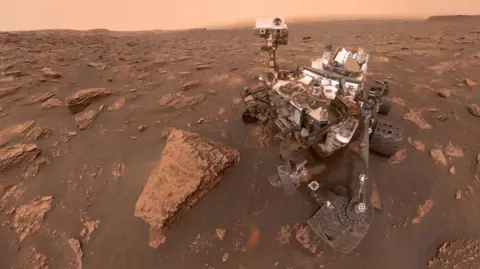The article titled “How to Avoid a Puncture on the Moon” discusses the innovative challenges and technological approaches that companies like Michelin and Bridgestone are taking to develop durable wheels for lunar exploration, especially in light of the NASA Artemis missions slated for the coming years. The need for these advancements has become particularly pressing as space agencies aim to return humans to the Moon and venture to Mars, where the terrain poses significant risks to vehicles and equipment.
The journey of returning humans to the Moon through the Artemis program, which is expected to commence by 2027, marks a new era in lunar exploration. Notably, Artemis missions will push further across the Moon’s surface than the Apollo missions did in the 1960s and 1970s, with plans to cover an unprecedented 10,000 kilometers over a decade. This ambitious goal underscores the necessity for robust and reliable lunar vehicles capable of withstanding extreme conditions. According to Sylvain Barthet, Michelin’s lunar airless wheel program director, the aim is to facilitate extensive exploration with sustainable utility over long durations.
One critical challenge faced by technology developers is the extreme temperature range on the Moon, especially at its poles, where temperatures can dip below -230 degrees Celsius—nearly absolute zero, a state where atomic movement ceases. Such harsh conditions present significant issues for conventional rubber tyres, which would lose their ability to deform and recover shape, hence negatively affecting their performance. Dr. Santo Padula, a NASA engineer, highlights that any permanent deformation in a tyre leads to inefficient rolling, resulting in energy loss. Thus, the development of materials that can endure these temperatures while maintaining flexibility and functionality is of utmost importance.
Michelin’s strategies also incorporate groundbreaking materials science to counteract these challenges. While traditional Apollo lunar rover tyres were constructed from zinc-coated piano wire, the new designs may rely on metal alloys and high-performance plastics to facilitate airless wheels. Innovations such as nitinol, a nickel-titanium alloy with shape memory properties, are showing promise. This material can deform under stress and then revert to its original shape, providing both flexibility and durability, according to Earl Patrick Cole, the CEO of The Smart Tire Company.
Bridgestone’s approach has emerged from bio-mimicry, mirroring the structural qualities of camel footpads—soft, broad surfaces that help in weight distribution across loose terrain. By utilizing a felt-like material, Bridgestone aims to create a tread that promotes stability and reduces the likelihood of getting stuck in loose lunar soil, while maintaining a design with a flexible framework that supports the weight of lunar vehicles.
Both Michelin and Bridgestone are currently engaged in rigorous testing, simulating lunar conditions with their prototypes. Michelin is evaluating its tyre models on volcanic terrains that resemble the Moon, while Bridgestone has replicated testing environments in Japan’s Tottori Sand Dunes. NASA is expected to make decisions on tyre selection later this year, which may involve choosing one company’s proposal or elements from multiple submissions. Alongside these company efforts, the European Space Agency is also investigating possibilities for its own lunar rover technology.
The article highlights the significant crossover between space technology advancements and potential terrestrial applications. Innovations developed for lunar and Martian exploration might soon find uses in consumer products, such as durable cycling and motorbike tyres built from the same advanced materials developed for space applications. As highlighted by Dr. Cole’s ambitions, the ultimate goal for many involved is the chance to contribute to humanity’s return to other celestial bodies—a personal wish that inspires the next generation.
Thus, as we embrace the future of space exploration, the challenges of developing effective solutions for lunar conditions signify both a test of engineering ingenuity and a key step in our journey toward interplanetary exploration.











